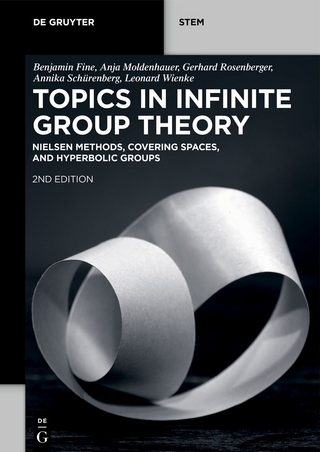
Synthetic Differential Geometry
Cambridge University Press (Verlag)
978-0-521-68738-6 (ISBN)
Synthetic Differential Geometry is a method of reasoning in differential geometry and differential calculus, based on the assumption of sufficiently many nilpotent elements on the number line, in particular numbers d such that d2=0. The use of nilpotent elements allows one to replace the limit processes of calculus by purely algebraic calculations and notions. For the first half of the book, first published in 2006, familiarity with differential calculus and abstract algebra is presupposed during the development of results in calculus and differential geometry on a purely axiomatic/synthetic basis. In the second half basic notions of category theory are presumed in the construction of suitable Cartesian closed categories and the interpretation of logical formulae within them. This is a second edition of Kock's classical text from 1981. Many notes have been included, with comments on developments in the field from the intermediate years, and almost 100 new bibliographic entries have been added.
Anders Kock is an Associate Professor of Mathematics at the University of Aarhus, Denmark.
Preface to the second edition (2005); Preface to the first edition (1981); Part I. The Synthetic Ttheory: 1. Basic structure on the geometric line; 2. Differential calculus; 3. Taylor formulae - one variable; 4. Partial derivatives; 5. Taylor formulae - several variables; 6. Some important infinitesimal objects; 7. Tangent vectors and the tangent bundle; 8. Vector fields; 9. Lie bracket; 10. Directional derivatives; 11. Functional analysis - Jacobi identity; 12. The comprehensive axiom; 13. Order and integration; 14. Forms and currents; 15. Currents - Stokes' theorem; 16. Weil algebras; 17. Formal manifolds; 18. Differential forms in terms of simplices; 19. Open covers; 20. Differential forms as quantities; 21. Pure geometry; Part II. Categorical Logic: 1. Generalized elements; 2. Satisfaction (1); 3. Extensions and descriptions; 4. Semantics of function objects; 5. Axiom 1 revisited; 6. Comma categories; 7. Dense class of generators; 8. Satisfaction (2); 9. Geometric theories; Part III. Models: 1. Models for axioms 1, 2, and 3; 2. Models for epsilon-stable geometric theories; 3. Well-adapted models (1); 4. Well-adapted models (2); 5. The algebraic theory of smooth functions; 6. Germ-determined T-infinity-algebras; 7. The open cover topology; 8. Construction of well-adapted models; 9. Manifolds with boundary; 10. Field property - germ algebras; 11. Order and integration in cahiers topos; Appendices; Bibliography; Index.
| Erscheint lt. Verlag | 22.6.2006 |
|---|---|
| Reihe/Serie | London Mathematical Society Lecture Note Series |
| Zusatzinfo | Worked examples or Exercises; 4 Line drawings, unspecified |
| Verlagsort | Cambridge |
| Sprache | englisch |
| Maße | 152 x 229 mm |
| Gewicht | 370 g |
| Themenwelt | Mathematik / Informatik ► Mathematik ► Geometrie / Topologie |
| ISBN-10 | 0-521-68738-1 / 0521687381 |
| ISBN-13 | 978-0-521-68738-6 / 9780521687386 |
| Zustand | Neuware |
| Haben Sie eine Frage zum Produkt? |
aus dem Bereich


